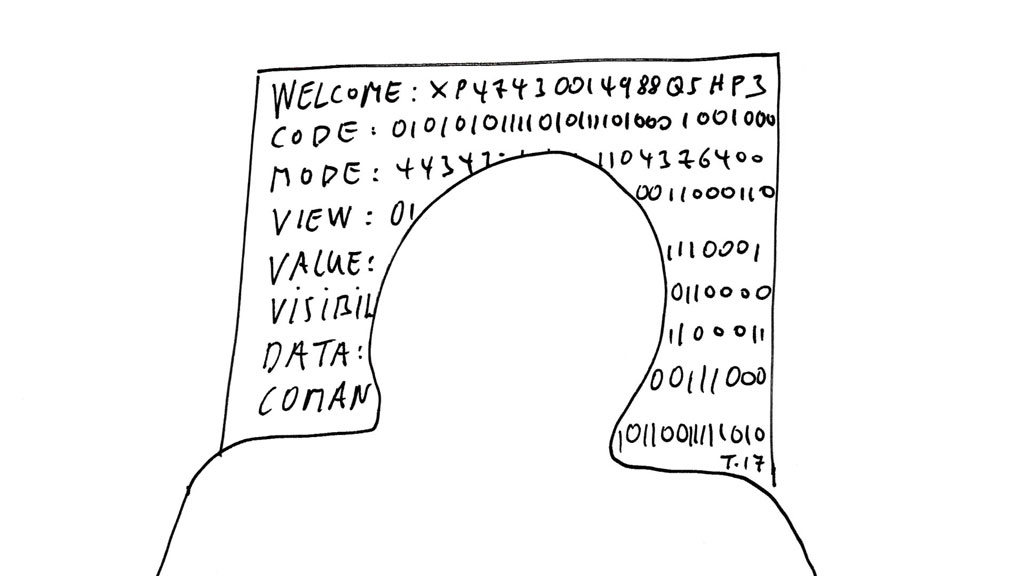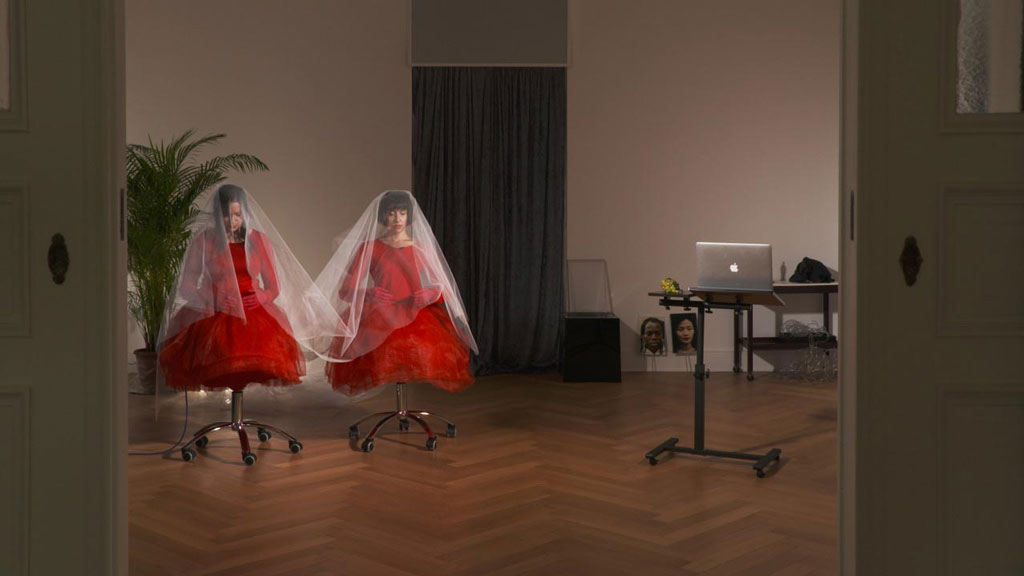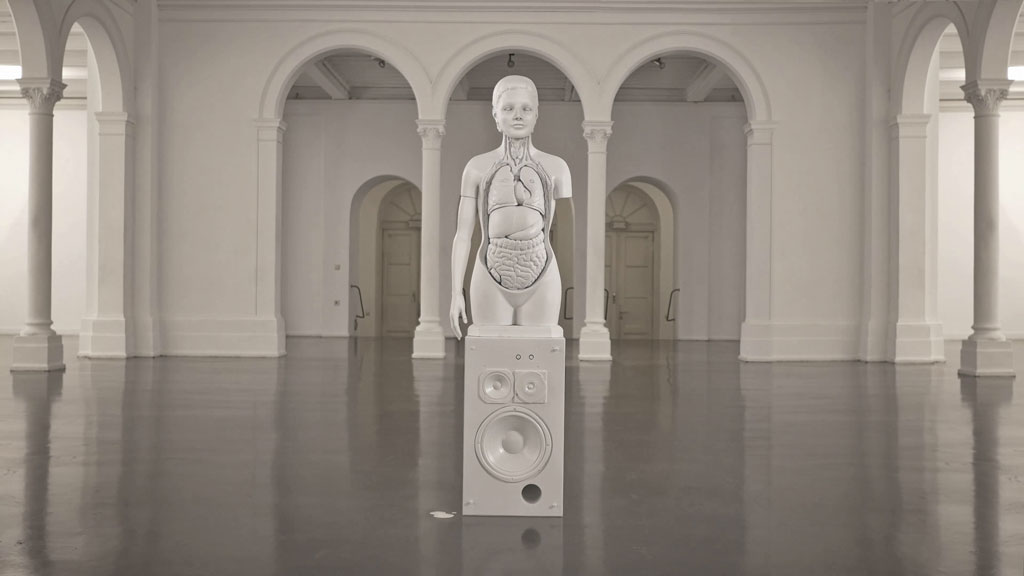VIDEO:Video Art Miden-ARTificial Intelligence
 Less than a decade after breaking the Nazi encryption machine Enigma and helping the Allied Forces win World War II, mathematician Alan Turing changed history a second time with a simple question: “Can machines think?” Turing’s paper “Computing Machinery and Intelligence” (1950), and it’s subsequent Turing Test, established the fundamental goal and vision of artificial intelligence.
Less than a decade after breaking the Nazi encryption machine Enigma and helping the Allied Forces win World War II, mathematician Alan Turing changed history a second time with a simple question: “Can machines think?” Turing’s paper “Computing Machinery and Intelligence” (1950), and it’s subsequent Turing Test, established the fundamental goal and vision of artificial intelligence.
By Dimitris Lempesis
Photo: Video Art Miden Archive
New technologies, and in particular artificial intelligence, are drastically changing the nature of creative processes. Computers are playing very significant roles in creative activities such as music, architecture, fine arts, and science. The independent organization Video Art Miden in the exhibition “ARTificial Intelligence” at Jönköpings läns museum presents 8 works that deal with various concepts concerning the “homo digitalis” era and artificial intelligence, exploring the physical detachment and the gradual digitalization and virtualization of our world, our societies and our minds. Either exposing the ironies of our “smart world”, or reaching for an algorithmic emotional intelligence or analyzing the “artificial curiosity” and “self-development” of bots, all works have one thing in common: they are tracing and decoding human behavior in the digital era and explore our relationship with our self and “the other”.
“Meta_Face” is a collaborative video by Jürgen Trautwein and Silvia Nonnenmacher aka jtwine. The video is based on original pen and ink drawings on letter-size paper. The video observes our obsessions and addictions in a digitalized world. Through our devices and social media we are being deep-faced, spied-on, infiltrated and manipulated to become vulnerable addicts, exploitable for perpetual digital harvest. “Meta_Face” reveals the physical detachedness from each other, leading us to the human species homo digitalis, a family of post-reality primates.
Landia Art and Economy Foundation present 2 videos. In “Chatbot Dialogs” the explore the impact of big data and AI on our minds and societies. The dialogs are based on transcripts of real conversation with existing chatbots. Chatbots are synthetic intelligent agents that more and more closely resemble humans in appearance, behaviour and spontaneous reactions. Their faces and voices personify collections of algorithms that extract information and learn from us, the users. Tech companies utilise this data to create more sophisticated bots, infused with emotional intelligence and “artificial curiosity”. Today the World Wide Web is populated by many such agents that are often perceived by users as another human on the other end. With their help we are promised to build more informed opinions and make better choices. Employed in a wide range of fields for not always fully transparent goals bots and algorithms increasingly influence our thinking. “Human Applications” is an art film reflecting on the algorithmic patterns and architectures behind biological and artificial intelligence. MareNostrum 4, the supercomputer harboured underneath a deconsecrated chapel in Barcelona, provides the perfect backdrop to Human Application’s opening sequence. In the 19th century, when the church was erected, western societies broadly believed we were originated and governed by a single, divine creator. We meet our protagonists, a real computer scientist and his two humanoid AI agents (played by actors) in God’s house. They are the conduits for our exploration of a paradoxical world in which it is humans, not God, playing the role of divine creator.
In Elliott Nicole J. Waller & Fabian Forban’s “AEI (artificial emotional intelligence)”, a non-binary person is living it´s emotions and fighting gravity in a dance whilst being scanned by AI. As a result artificial emotions are being projected through her face which features no mimicry leaving the person in a state of transcendent confusion. Artificial emotional intelligence is already widely used by marketing experts to manipulate humanity into willing consumers.
“Artificial Intelligence VS Aristotle// beta 0.98” by Yvana Samandova & Borjan Zarevski, presents a hybrid dialogue between the introduction lines of Aristotle’s Metaphysics (Book Alpha), and two different Chabot technologies (ChatScript VS Hybrid AIML). While the Avatar of Grace Jones used Hybrid AIML exclusively, the avatar of Aristotle used alternatively lines from Metaphysics and answers generated from ChatScript. The results are completely uncontrolled and unexpected.
For “Her Voice”, Katerina Athanasopoulou & Eleni Ikoniadou say for “Most grandmothers read fairy tales to their grandchildren. Mine would put me to bed with stories about unidentified audio events and facts about auditory perception”.
The protagonist of “PURE WHITE”, by Sven Windszus, is an anatomy model. She awakes in a seemingly perfect world. The fact that she must live as a “damaged” being in such an ideal environment amplifies her pain. She converses with her creator in an attempt to find answers. She becomes increasingly frustrated by her existence as she seeks to become part of this perfect world. She is at the mercy of her chaotic feelings; despair mixes with awe, self-pity with resignation. She considers the removal of her heart to be a last resort. In surrendering herself, she sacrifices everything living within her and becomes one with this supposedly perfect world.
Participant artists: Juergen Trautwein & Silvia Nonnenmacher, Di Hu, Landia Art & Economy Foundation, Elliott Nicole J. Waller & Fabian Forban, Yvana Samandova & Borjan Zarevski, Katerina Athanasopoulou & Eleni Ikoniadou and Sven Windszus.
Info: Curator: Gioula Papadopoulou, Jönköpings läns Museum, Dag Hammarskjölds plass 2, Jönköping, Duration 30/5-23/8/20, Days & Hours: Mon-Fri 10:00-17:00, Sat 11:00-15:00, https://jonkopingslansmuseum.se



